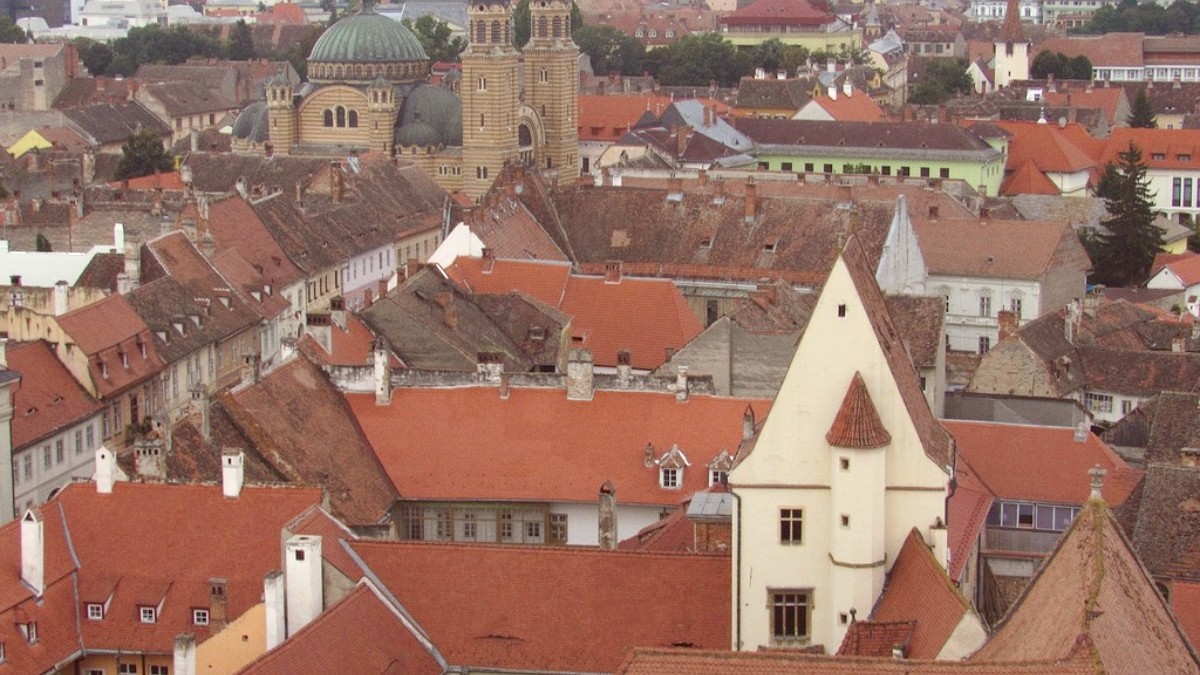
Transylvania, Romania
Romanian cuisine is a hearty, rustic blend with Turkish, Hungarian, and Slavic influences, plus Saxon twists.
Meals are substantial, featuring meat, cabbage, potatoes, and dairy, reflecting an agricultural past.
Pork, beef, chicken, root vegetables, and extensive use of cabbage, fresh or pickled.
Polenta (`mămăligă`) functions as a frequent accompaniment. Sour cream (`smântână`) garnishes often, for added richness. Various cheeses (`brânză`) hold popularity.
Flavors are rich and savory, with common use of herbs like dill, parsley, thyme, paprika, and garlic.
Transylvanian cuisine tends to be richer, with more use of smoked meats and dairy products, reflecting the region's historical ties to Central Europe.
Soups (`ciorbă`) form a cornerstone of Romanian cuisine. They frequently receive sour notes with `borș` (fermented wheat bran) or lemon juice, giving them a distinct tangy flavor. `Ciorbă` has many variations.
A hearty, sour tripe soup, often served with sour cream, minced garlic, and chili peppers.
A popular staple.
Iconic cabbage rolls with minced meat and rice, simmered in tomato sauce, served with `mămăligă` and `smântână`.
A must-try dish.
Grilled skinless sausages of ground meats and spices, a popular street food served with mustard and bread.
Find them at outdoor grills.
Salty pretzels and savory or sweet pastries with various fillings. Great snacks.
Sweet bread similar to panettone for holidays. Papanași are traditional doughnuts with sour cream and fruit jam.
Sibiu features restaurants offering modern Romanian or international fine dining experiences, mainly in the Old Town.
Abundant throughout the Old Town and surrounding areas. They offer a mix of traditional Romanian dishes and popular international cuisine.
For budget-friendly meals, look for local canteens (`cantină`), small pastry shops (`cofetărie`), or street food vendors.
Sibiu's main traditional market for fresh produce, cheeses, smoked meats, and baked goods directly from local farmers and producers.
A great place to experience local life and taste regional products.
Held annually, this festival showcases regional culinary delights, featuring a chance to taste various traditional foods and learn about local producers.
Check local event calendars for dates.
Pizzerias and pasta restaurants are found in the city center.
Kebabs and other Middle Eastern flavors are available.
Limited but growing Asian dining choices.
Burger joints and casual American fare.
Halal and kosher food options are limited. Specialized restaurants are rare. Larger cities like Bucharest might feature more choices.
If strict adherence is necessary, consider self-catering or researching specific ingredients.
Awareness of gluten-free and other allergens shows growth but lacks universality. Carrying a translation card proves advisable.
Stick to naturally gluten-free options like grilled meats, vegetables, rice, or `mămăligă`. Avoid fried foods or dishes with sauces unless certain of ingredients.
Clearly communicating your dietary needs to restaurant staff holds importance.
Prioritize naturally compliant dishes and simple preparations when unsure.
Some local tour operators or guesthouses may feature cooking classes focused on Romanian or Transylvanian cuisine.
Food tours often explore Piața Cibin and local eateries, permitting tasting various specialties and learning about their origins.
Discover local wines from Romania's distinct wine regions. Many restaurants and specialty shops offer tasting opportunities.
Many restaurants sit within historic buildings in the Old Town, creating a charming atmosphere.
Dine in a piece of history.
Some establishments showcase traditional Transylvanian decor, making the dining experience richer.
Immerse yourself in local design.
Consider a day trip to a nearby winery for a tasting and tour if time permits.
Piața Cibin is perfect for collecting fresh ingredients for a picnic or self-catering meal.
Look for local craft breweries for a taste of Romanian artisanal beers.
Immerse yourself in Sibiu's culinary scene for a appreciation of its culture.